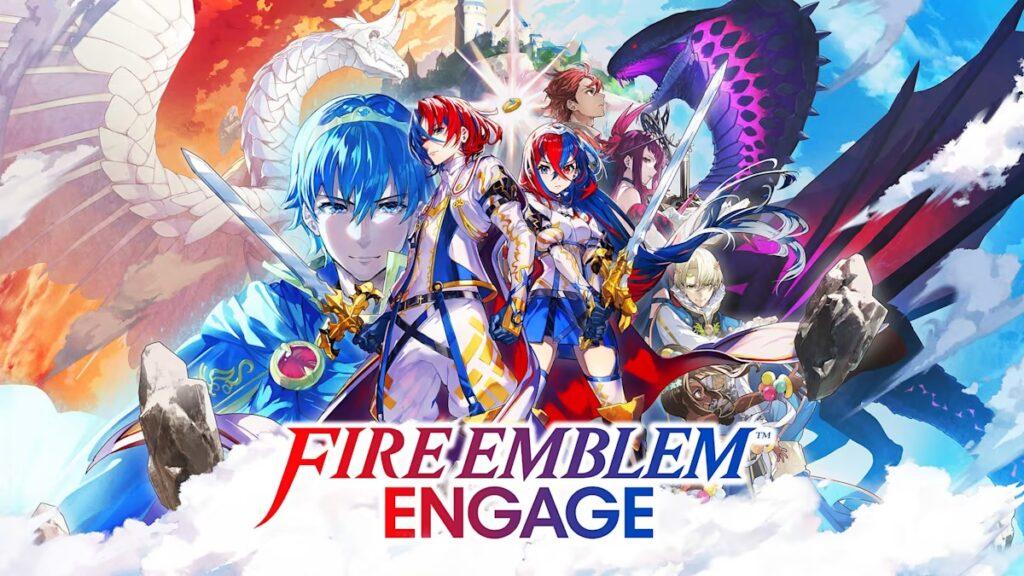
Fire Emblem has been around for a rather long time. While the franchise only came to North America with the release of Fire Emblem for the Game Boy Advance in 2003, the first game in the series was released wayyyyy back on the Famicom in 1990 by Intelligent Systems. In fact, Nintendo re-released Fire Emblem: Shadow Dragon and the Blade of Light as a limited digital release a little while ago and it still holds up to this day (our review here).
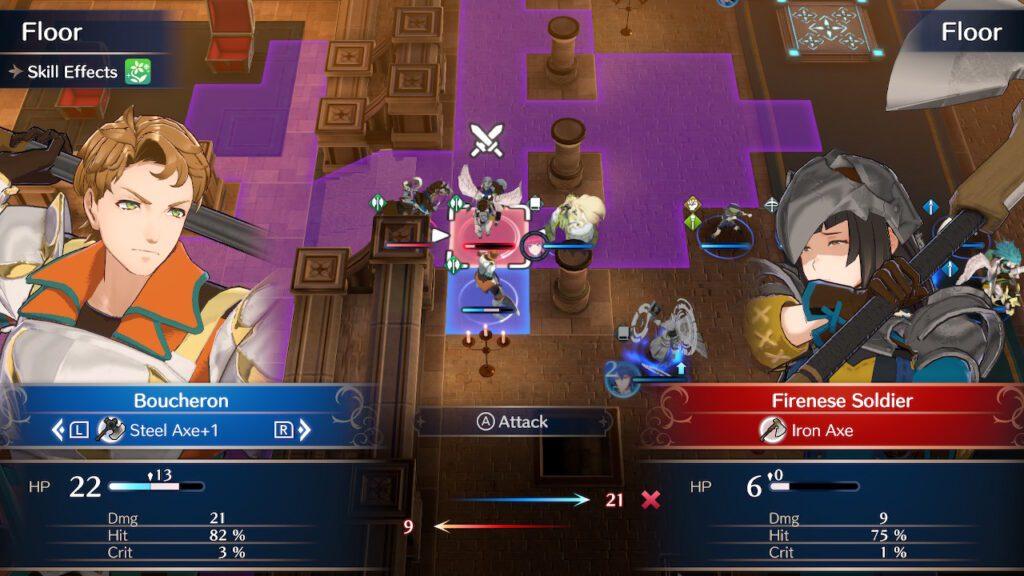
Since then, the franchise has exploded and the fan base is massive, surprising for a hardcore turn-based strategy RPG with permadeath. Usually that’s the sort of thing that’s reserved for hardcore fanboys (*cough cough*) and pretty much no one else. But Fire Emblem has gone mainstream and it’s time to talk about the latest entry in the wildly popular series, Fire Emblem Engage. In Engage, you play ‘The Divine Dragon Alear’. Yeah, it’s a mouthful, but you can of course change your name from Alear to something else if you’d like. Regardless, you and your friends defeated an evil dragon mage named Lord Sombron a thousand years ago but you were injured and fell asleep for all that time. Now you’ve awoken but things are not exactly as they seem.
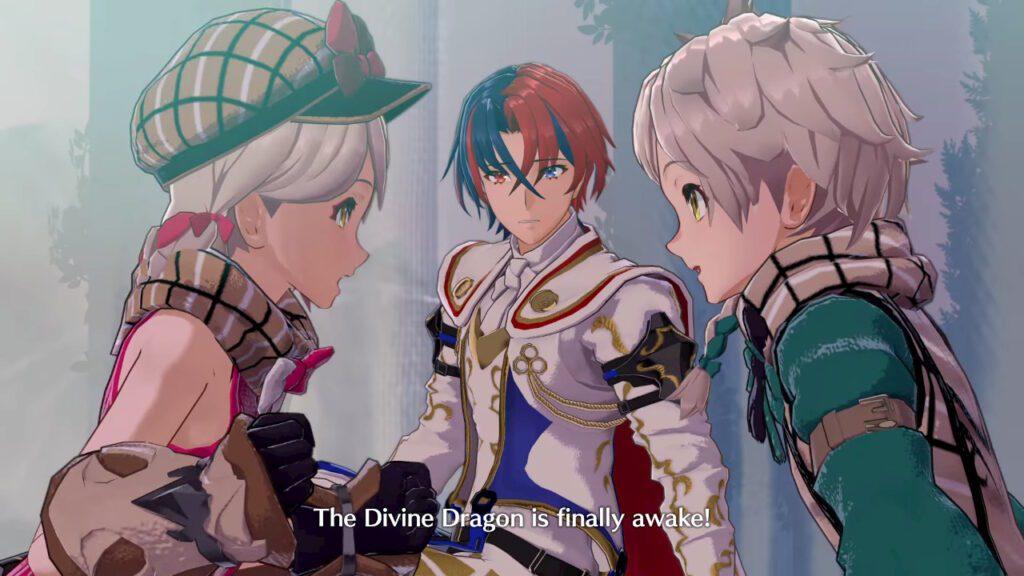
The game is heavily story-based as all Fire Emblem games are. However, unlike many previous entries, the story is full of weird plot holes and trite character-building experiences. You’re trying to obtain the ‘Emblem’ rings in order to put the world right under your benevolent power, but the Fell Dragon and his minions are out to stop you. Sound hokey? You’re not wrong. At the beginning, the plot and script of Fire Emblem Engage is sickly-sweet pap that drags on in the beginning and gets more interesting around the middle. It’s not as bad as it first appears but the dialogue is fairly painful even if the plot is weirdly clever. To be really honest, when you step back and really think about the plot once the game is a wrap, it sounds more like a season storyline from the CW’s Flash TV show than anything else. Not what you’d typically expect from the franchise but not necessarily a bad thing. Whether that’s a selling point or not is up to you.
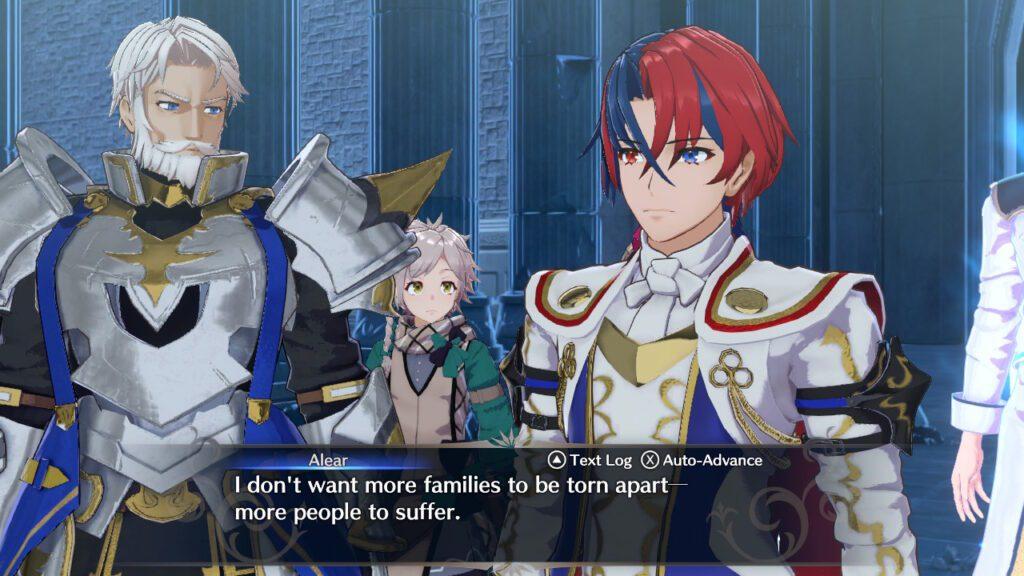
The Fire Emblem series is all about tactical turn-based gameplay and Engage definitely has that going for it. After each story segment (and a bit of time playing through the linear bits at the beginning), you get the option to fight skirmishes to strengthen your troops or continue on in the story finishing main chapters. With 26 chapters and a ridiculous number of skirmishes, you’ll have plenty of time to refine your strategy! Gameplay is grid-based and your movement is designated by flashing squares which show your range and attack range. Fire Emblem Engage also uses the weapons triangle. This means that swords work well against axes, axes against lances, and lances against swords. Each does extra damage to those weapon types and has the opportunity to ‘break’ an opponent, staggering them and forcing them to drop their weapon.
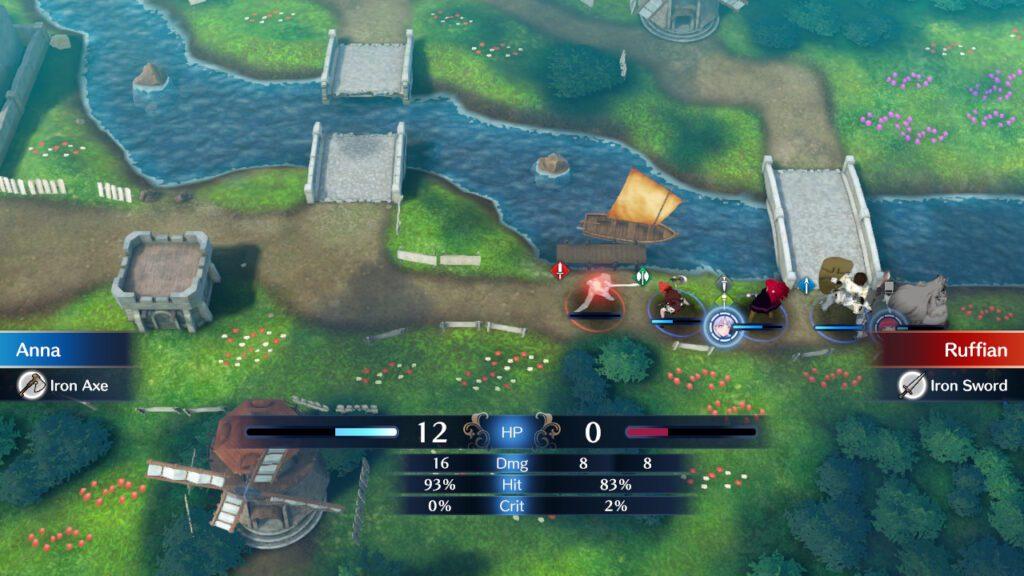
The weapon triangle has been in Fire Emblem for a very long time it’s generally a staple of turn based strategy. It’s an effective system that’s easy to remember and adds a bit of calculation to combat. That’s not the only planning you’ll have to do though. You’ve also got the Emblems to contend with. When you ‘Engage’ in Fire Emblem Engage, you’re activating a magic ring storing the essence of a dead hero. Starting out with everyone’s favorite hero Marth, you’ll have to assign Emblems to key allies, switch them up as your allies shift strategies, and naturally, summon them in battle.
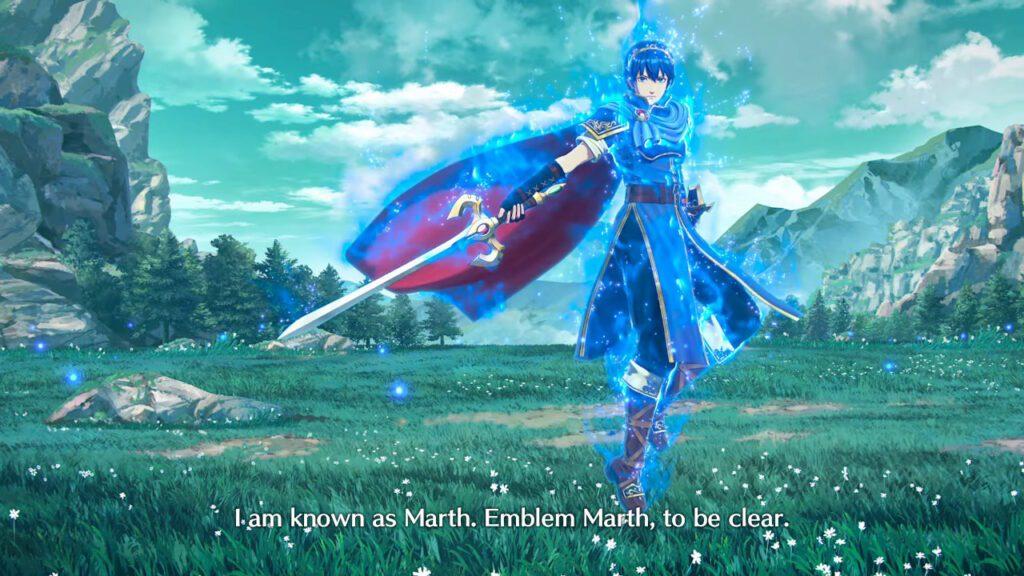
Summoned Emblems fight with the character wearing their ring. You have a limited number of turns to utilize their abilities, which vary from ring to ring. Once the three turns have ended, the character summoning the emblem reverts back to normal and the extra skills disappear. Step on a blue dot on the map and you’ll regain emblem power, allowing you to summon again. Summons can be powerful and even more surprisingly, since the Emblems are rings, they can be passed from character to character between battles, allowing you to power up relationships with the ring denizens and eventually even inherit some of their abilities. Do this effectively and you can massively overpower characters!
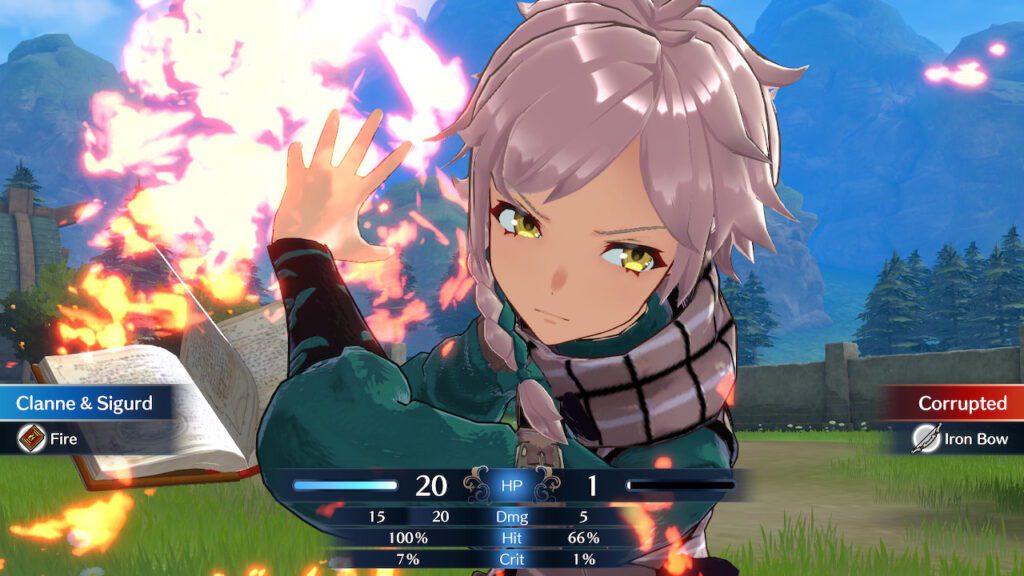
In between battles, you can go back to the floating island of Somniel where you can develop your relationships with the various characters in your crew. There was a lot of potential here to have a huge impact on the game but honestly, Intelligent Systems missed the the boat here. Originally, Fire Emblem had a unique strategic element, permadeath. Lose a character aside from the main one and they never came back. Ever. It was one of the things that made Fire Emblem unique, the potential to miss out forever on character intereactions and be left with an unbalanced party due to the failure of your tactics. It was hard. It was realisitic. It doesn’t really exist in Fire Emblem Engage.
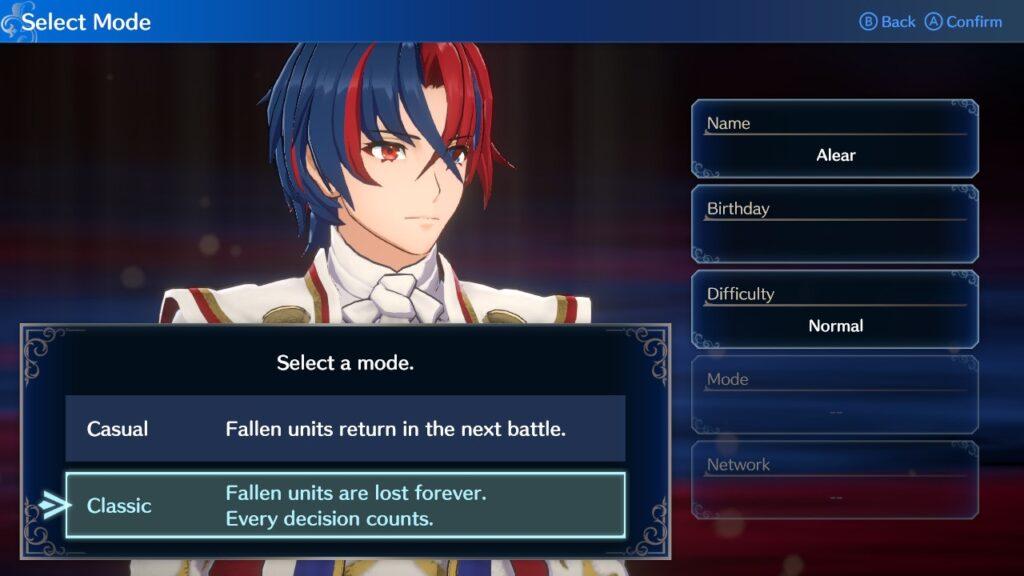
How does this relate to the non-combat portion of the game? Well, Engage has two modes, Casual and Classic. In casual mode, there’s no permadeath. In Classic, there is. Well, sort of. Within a few stages, you find a gem that an enemy drops and you can literally turn back time with it. Make a choice you didn’t like? Just turn back time. Lose a character because you didn’t respect the weapons triangle? Turn back time. It’s easy to do and only takes seconds and it has infinite uses too. If you’re playing on standard difficulty this makes the game so ridiculously easy that there’s no challenge left. Sure, you could not use it, but who’s going to do that? On higher difficulties, the game is so unforgiving that this makes sense but not many players start there.
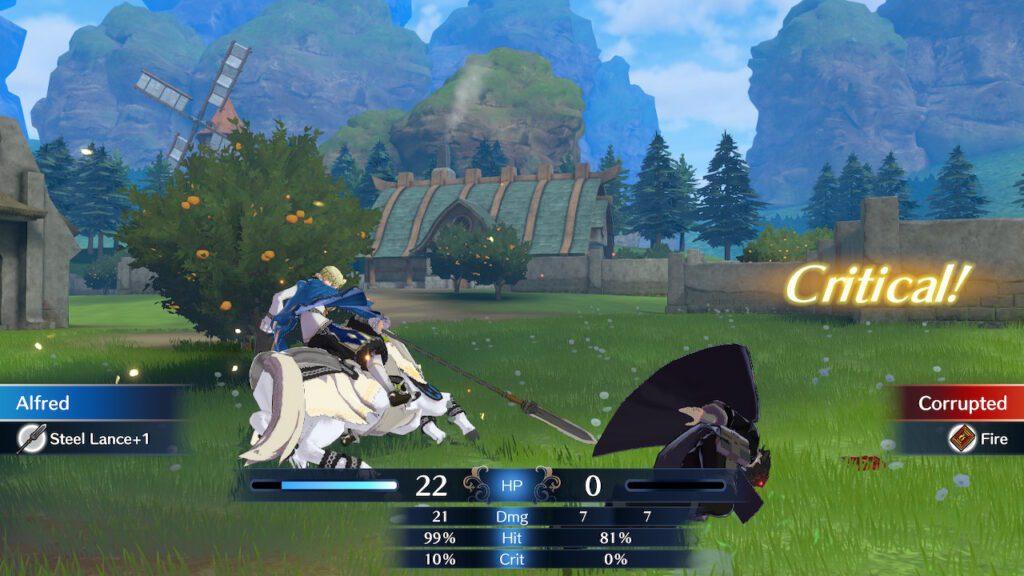
This actually opens up a discussion about accessibility as well and to be fair, Fire Emblem Engage is one of the most accessible games in the entire series with difficultly levels and challenges available at every skill level, tons of spoken dialogue, subtitles, and mitigation for every aspect of a gamer’s abilities. That’s a good thing. It just so happens that there’s also a bit too much simplicity here. Should our games be accessible? Definitely. Should some of this stuff be in a dedicated accessibility mode? Perhaps.
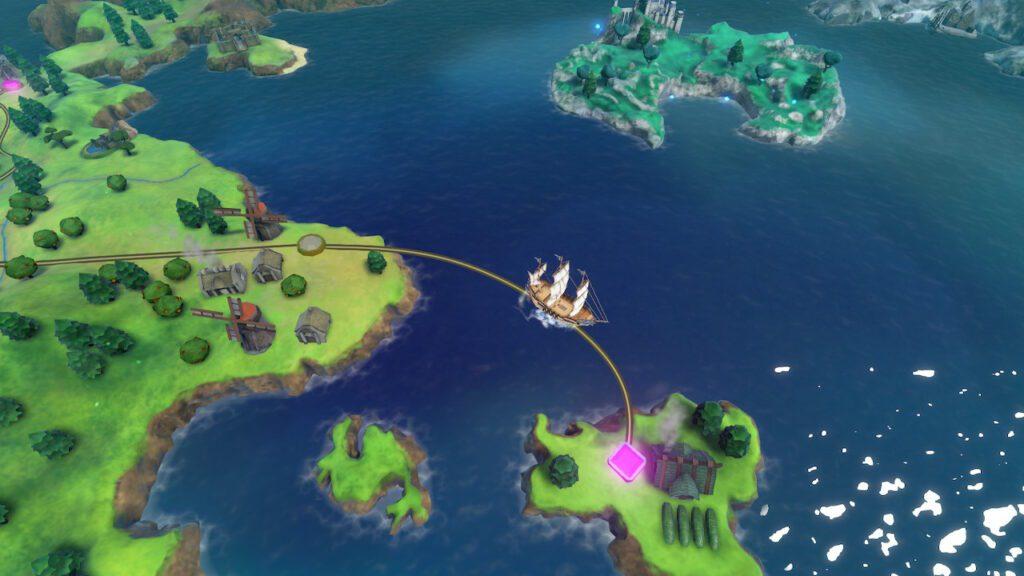
Anyway, back to Somniel. Imagine if there was no way to rewind the clock on permadeath and the game autosaved as soon as you lost a character. Then you went back to the island base and the impact of their deaths rippled through the remaining soldiers, slowly demoralizing them as you failed again and again but persevered. How insane would that be? Right now, even if that was the case, most players would never know it because the ease with which you can keep everyone alive is ridiculous and there’s constant FOMO (fear of missing out) going on with regard to playable characters. The ability to provide an insane shift in the stories and complexity of the game is just missed here.
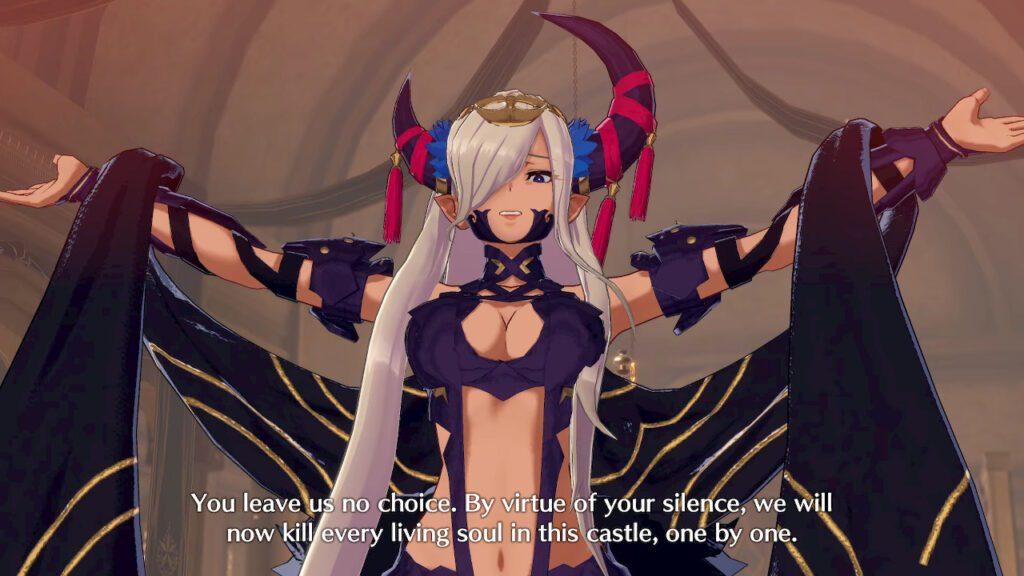
Ragardless, while you’re in Somniel, it’s more like a life sim than anything else. You can upgrade weapons, harvest a bunch of food and supplies from random check points, pet animals, wander the gardens, and chat with the people on your team. Wheeeeeee. The main character legitimately stops to converse about how delightful the tea party they just attended was and it’s almost torturous in how time consuming the banter is. The load times are atrocious on Somniel too, with every transition to a new part of the island taking way long than it should.
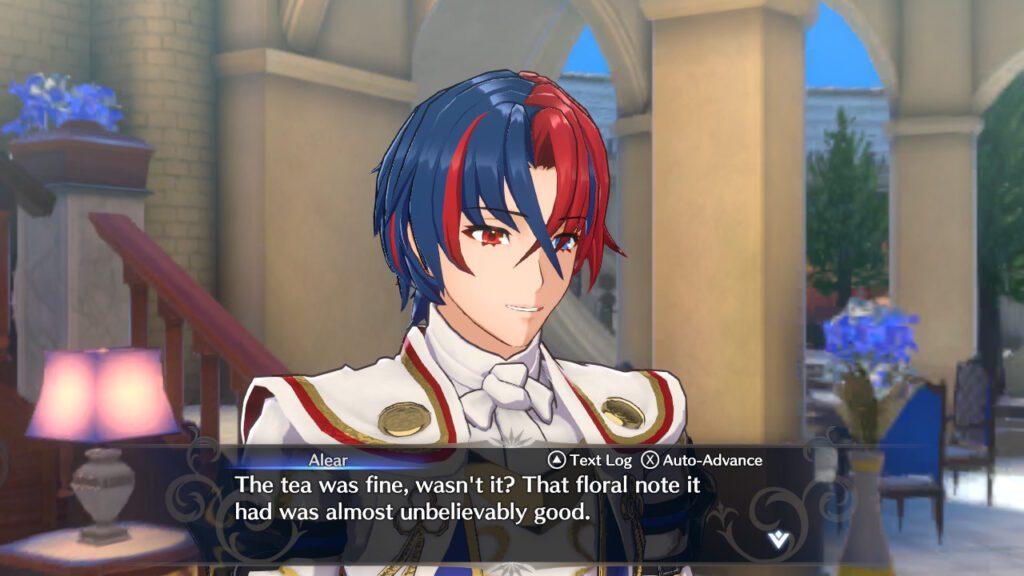
In fact, one of the most frustrating things about this part of the game is the loading. You have to go to the ring chamber often to *cough* polish your Emblem rings. Yeah. There’s a polishing minigame and yes, it’s hard to be restrained with the jokes here. The Emblems get all happy with your polish them (augh, it’s so difficult not to take this to its natural conclusion!) and your relationships deepen with them as you rub them… (Seriously!!!). But there’s load time going in and out of the chamber. There’s load time when you go to ‘train’ as well, which is literally choosing a couple of characters to fight each other in a non-interactive combat arena, waiting for them to finish, and then listening to their banter to boost their levels. You can also go play a physical training minigame where you use timed button presses to perform push-ups, sit-ups and more to get small temporary boosts to your characters for the next battle. Or you can have dinner with a random cook and some other warriors, providing interaction bonuses. The options are myriad…and they’re all incredibly boring.
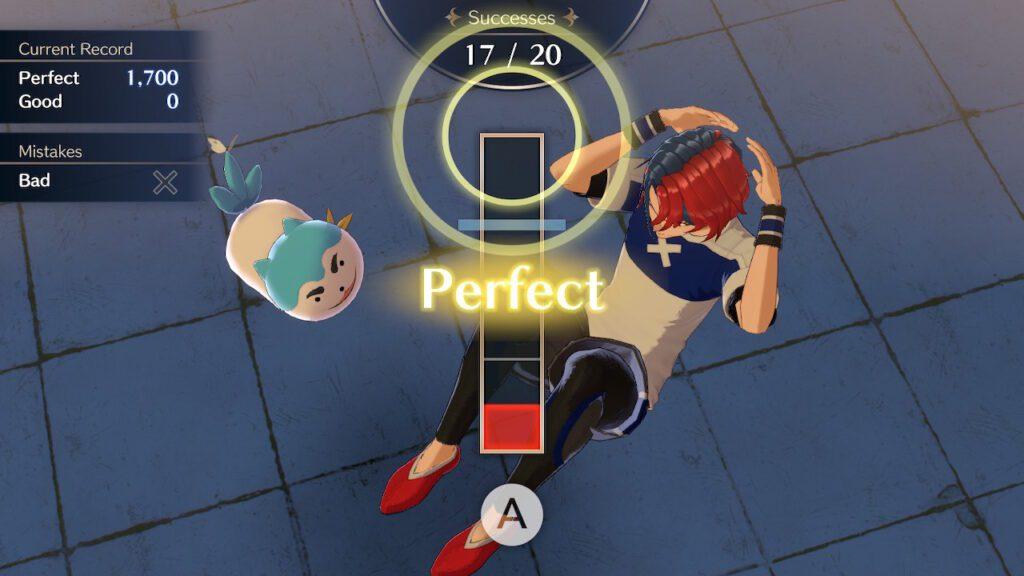
The entirety of Somniel is a brutal time-suck that has no real bearing on the story of the game. It’s filler that drags the entirety of Engage down with it, sucking away the impact that a serious military combat should have and replacing it with slice-of-life mechanics that would be not be out of place in a Story of Seasons game. There’s nothing wrong with that type of gameplay, to be fair. However, it’s hard to see the value here as it adds little depth to a game that should be focused on combat and military action. It also doesn’t help that the interactions and characters are equally shallow and pointless. Everyone in the game is weirdly pleasant and bland to the point that you don’t care about them or what they have to say by a third of the way through the game. You’ll just find yourself skipping through dialogue to get back to actually playing a strategy game.
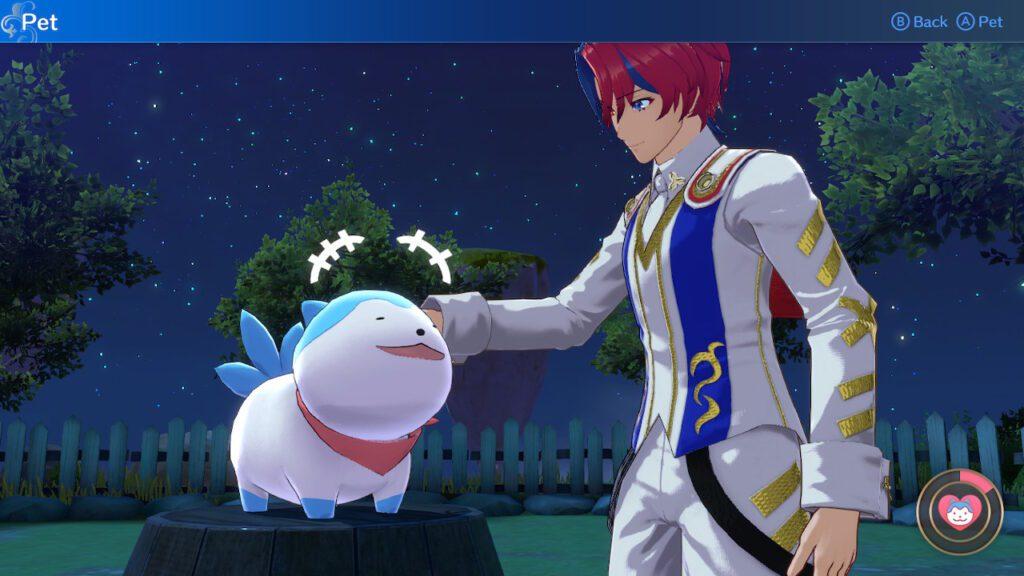
That’s an unfortunate design flaw for a game that not only lives on strategy but is good at it. Even when you can rewind, there’s some challenge here, especially in the late game. You definitely have to think out your moves and it’s not like Intelligent Systems doesn’t know how to make a strategy game. Fire Emblem Engage has excellent level design and balance if you just fight it out and ignore all the fancy abilities. It’s just unfortunate that there isn’t a vintage mode or something. Turning off all the character animations really makes the gameplay feel more interesting though (and cuts down on wasted time). If you do that, ignore the time crystal, and skip all the dialogue in Somniel, it starts to feel like a Fire Emblem of old and not quite so cumbersome. Chances are not many players will do that though.
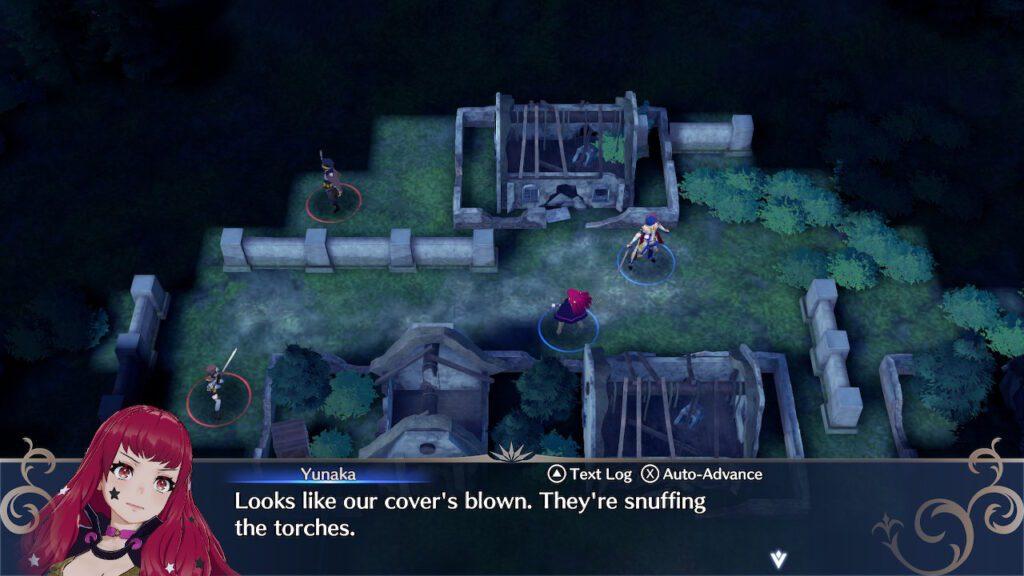
Visually of course, Fire Emblem Engage is marvelous. It’s a beautiful game, even if Alear looks weird with two different colored eyes and different colored hair on each side. It’s a strange choice and moderately distracting, especially when the shade of color shifts from scene to scene. Regardless, there’s a heck of a lot of cheesecake here as well, something that seems weirdly unnecessary. Character designs are fantastic of course. Probably not realistic, but that’s not something Fire Emblem has ever worked too much about, especially the modern games. The UI is also particularly good, as it should be with decades of design behind it. The ability to zoom in on the map is definitely neat, but it’s unfortunate you can’t get a bit closer to see the detail in the character designs on the battlefield instead of depending on time-consuming animations. Those animations are beautiful of course, but they quickly start to feel like esper summons in Final Fantasy VII…eminently skippable. There’s no value added by these long flashy scenes since it’s not like your hands need a break from selecting menu options and grid placements.
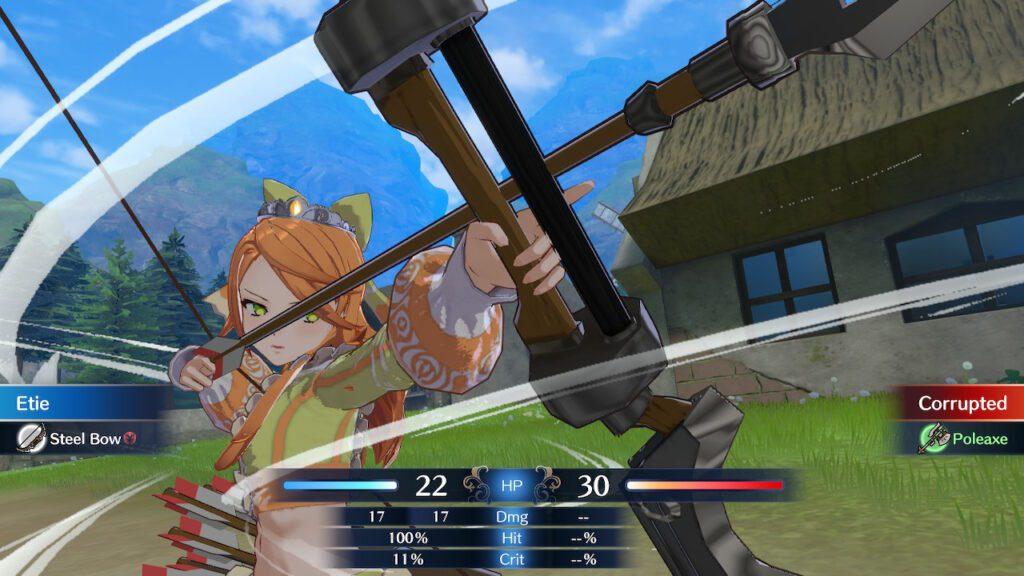
The music in Fire Emblem is a powerhouse as well, with sweeping epic tunes in a massive 165 track selection that makes the game sound epic even when the gameplay itself doesn’t always keep up. Fire Emblem’s music has always been great and it’s hard not to love the powerful chords and symphonic structure of the various tracks. Sound effects mix nicely with the visuals as well, masterfully enhancing every part of the game and the sound team should be applauded at the impact their work has on Fire Emblem Engage.
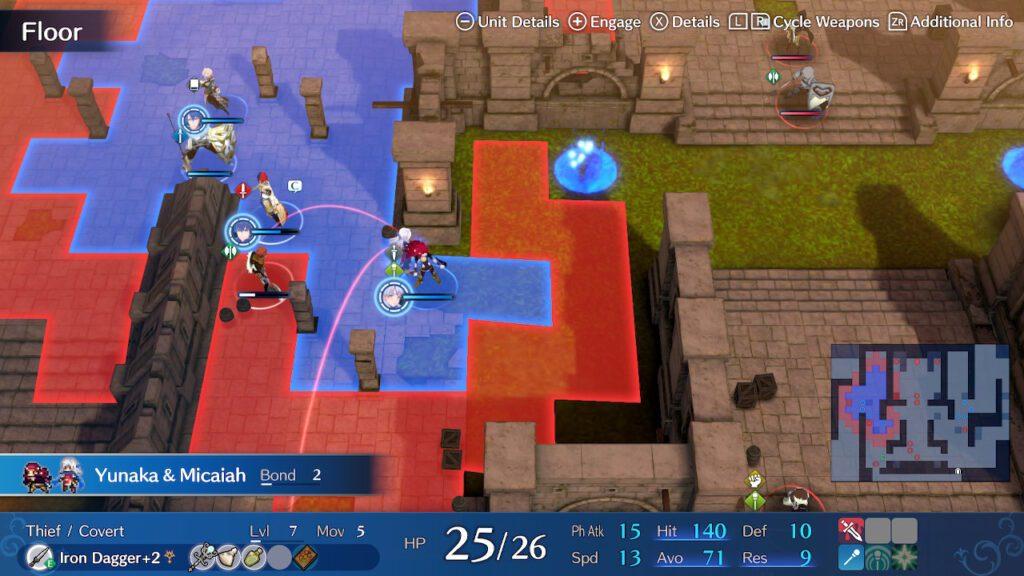
What you’re getting with Fire Emblem Engage is a sanitized version of the Fire Emblem experience. It doesn’t really stand out, it’s got a lot of filler, and the pacing is glacial, but it’s also still quintessentially Fire Emblem. If you want to tweak the way things are done, you can dig that old strategy magic out of the game, but you have to consciously choose not to perform certain actions to make the game more challenging. This is no tacticians dream (unless you go to a hard difficulty and then the balance skews wildly). Instead, it’s Fire Emblem for casuals and while that’s not a bad thing, longtime fans of the series will be more than a bit put off. The whole point of a strategy game is to focus on strategy and Fire Emblem Engage loses sight of that. Add to that the lifeless, shallow characters and interactions and you have a game that unfortunately, doesn’t engage nearly as much as it should. Even with some of the clever plot twists toward the end, there’s no real connection to the characters. And while the series is drawing a lot of new fans in with the style, it’s probably losing a lot of older ones too.
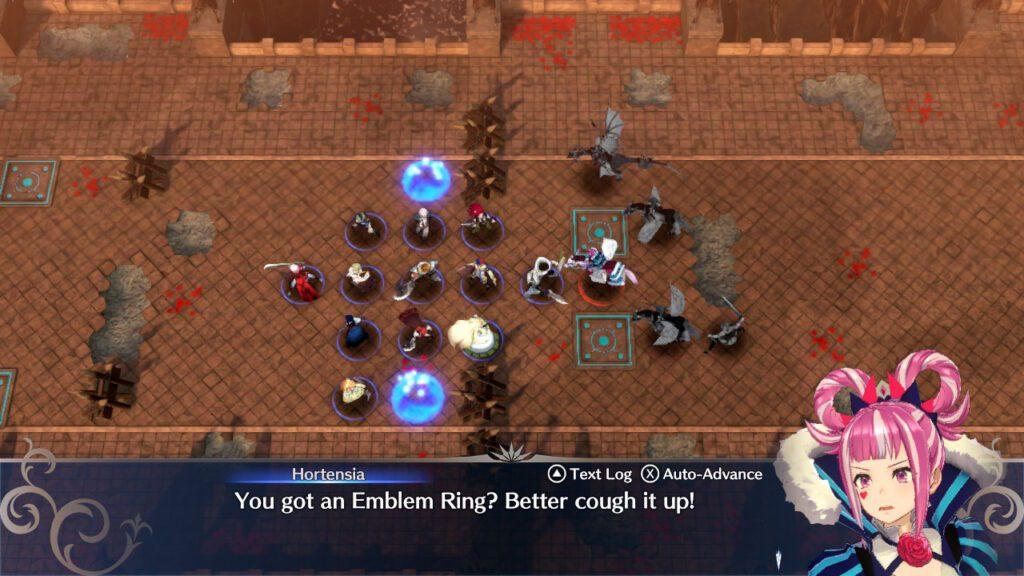
It’s interesting to think about where the Fire Emblem franchise has gone. We reviewed Triangle Strategy last year (review here) and it felt like there was too much focus on the story and not enough tactical gameplay. But that was largely preferable to where Fire Emblem Engage is at, with too weak of a story and too much filler. There’s potential here for the series to hit on war, loss, and a lot of other interesting topics, but instead it’s more like a lighthearted anime with an excellent strategy system tacked on. It feels dichotomous and it won’t be for everyone, especially at a full $60 price tag.
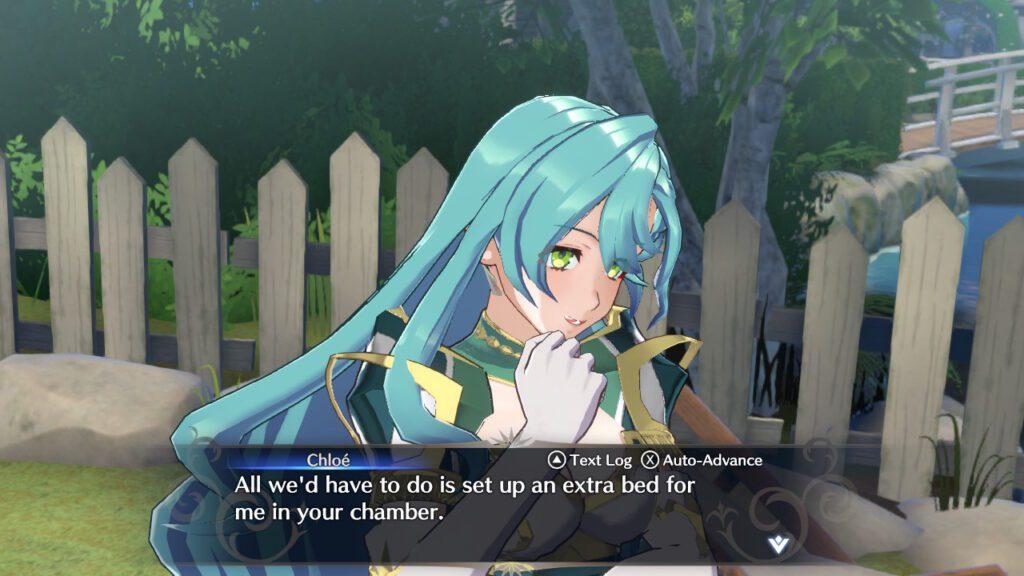
If you love anime-style games, want to try your hand at tactical strategy gaming, and like a plot that is moderately interesting but doesn’t take itself too seriously, Fire Emblem Engage is going to be the game for you. There’s a ton of content and options here and the accessibility is fantastic. Lots of flash, lots of depth to management, lots of little things to do. But if you’re looking for a serious strategic title with a plot of consequence, you won’t be finding it here. Sure, you can play on hard mode but that doesn’t make the plot any more exciting and there are other games in the genre that definitely do a better job of telling a story, even if their UI isn’t as outstanding. Fire Emblem Engage is a mixed bag across the board. Never really bad, but never really spectacular either and it’s definitely got a target audience that trends towards newer players. Now it’s up to you to decide if that’s what appeals to you.

This review is based on a digital copy of Fire Emblem Engage provided by the publisher. It was played on a Nintendo Switch in both docked and undocked modes and played equally well on both. Fire Emblem Engage is a Nintendo Switch exclusive.

